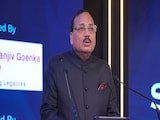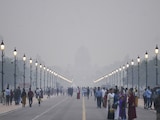On October 25, there will be a partial solar eclipse that can be seen in portions of Europe, western Asia, and northeast Africa. This celestial event will be formed by the Sun, Moon, and Earth coming together, although unevenly.
The eclipse will begin in India before it turns dark in the late afternoon, and it will be visible from most locations.
Why is this partial solar eclipse a special occurrence?
A partial eclipse takes place when the moon passes directly between the Sun and the Earth. It is not as dark outside during a partial eclipse as it is during a total eclipse, since a partial eclipse just partially blocks the Sun's light. During this event, the Sun appears to have a dark shadow covering some of its surface.
It'll be visible from the majority of India's regions
Kolkata, the eastern metropolis of India, will be able to witness the partial solar eclipse, the second of 2022, for a very small duration. The celestial phenomenon will be better observed in the northern and western regions of the country.
The eclipse will not be observed from north-eastern India as the celestial phenomenon will occur after sunset in those regions.
When will it begin?
The partial solar eclipse will take place from 8:58 am until 1:02 pm. India won't be able to see the eclipse's end because it won't be finished until after sunset.
When will the next partial solar eclipse occur?
On March 29, 2025, there will be another partial solar eclipse. India won't be able to see it though. On November 3, 2032, there will be one and only one partial solar eclipse that Indians will be able to witness.
Types of Solar Eclipses
According to NASA, there are four types of solar eclipses, total solar eclipse, annular solar eclipse, partial solar eclipse, and hybrid eclipse.
1: A total solar eclipse occurs when the Moon passes between the Sun and the Earth, completely blocking the Sun's face.
2: Annular Solar Eclipse: When the Moon is at or near its furthest point from the Earth and passes in front of the Sun, an annular solar eclipse occurs. Due to its greater distance from Earth, the Moon appears smaller than the Sun and does not entirely cover it.
3: A partial solar eclipse occurs when the Moon passes between the Sun and the Earth, but the Sun, Moon, and Earth are not perfectly aligned. Only a part of the sun will appear to be covered, giving it a crescent shape.
4: Hybrid Solar Eclipse: Because Earth's surface is curved, sometimes an eclipse can shift between annular and total as the Moon's shadow moves across the globe. This is called a hybrid solar eclipse.















